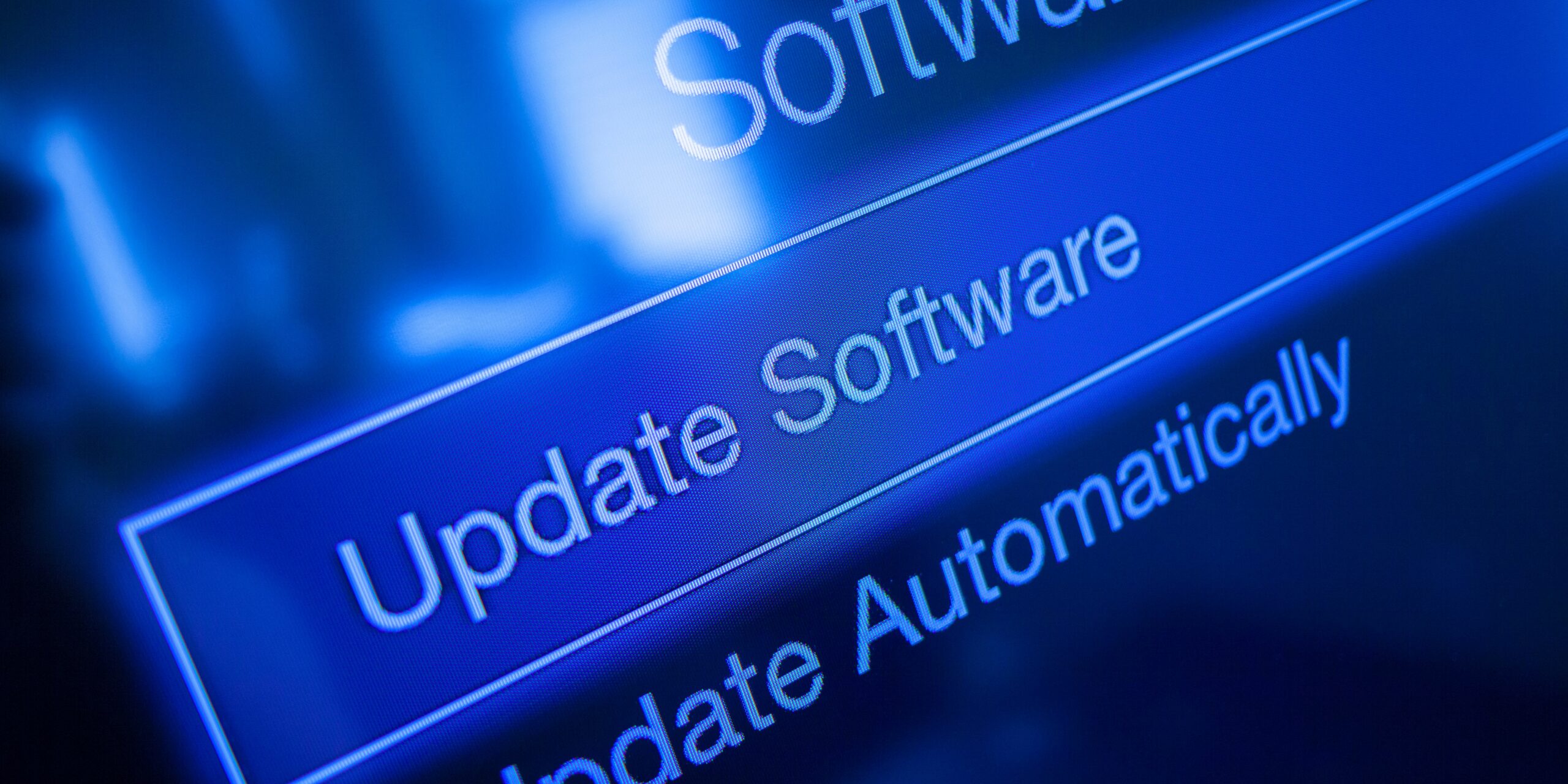 Any great software utilizes top-notch security procedures. Over the years, we’ve observed how some software has performed as intended, yet the product’s security features degrade them. A good piece of software would have been meticulously prepared from security to speed. But when it comes to a solid software application, security is the most crucial factor. And with the current rise in security concerns, any program must incorporate this element. But what is excellent software? What are the industry standards when it comes to apps and software, and how can you pick the best ones for your needs?
Any great software utilizes top-notch security procedures. Over the years, we’ve observed how some software has performed as intended, yet the product’s security features degrade them. A good piece of software would have been meticulously prepared from security to speed. But when it comes to a solid software application, security is the most crucial factor. And with the current rise in security concerns, any program must incorporate this element. But what is excellent software? What are the industry standards when it comes to apps and software, and how can you pick the best ones for your needs?
What is software?
Software is a collective term for programs, information, and instructions that provide computers and other electronic devices the ability to carry out particular operations and functions. It is an essential part of contemporary technology. This is because they enable consumers to interface with gear and utilize its capabilities. You can categorize software into two different groups: System software and application software.
System software controls and manages the computer’s fundamental operations. It also facilitates communication between hardware and other software. This includes operating systems, device drivers, and utility programs. The great majority of programs created for different user demands, such as communication platforms, productivity tools, and entertainment software, are a part of application software. The process of designing, coding, testing, and maintaining these programs. They are all necessary for the efficient operation of computers and the wide range of devices we use on a daily basis, from smartphones and laptops to sophisticated server systems—is known as software development.
Why do you need software?
Today’s technologically advanced society has made software a need. Across many domains, software is essential for automating jobs, boosting productivity, and streamlining complex procedures. Regardless of their size or industry, businesses depend on software. They use them to effectively manage operations, streamline workflows, and enable data analysis. Institutions use software in many different ways.
They play a part in customer relationship management (CRM) platforms to enterprise resource planning (ERP) solutions. Moreover, software enables businesses to make data-driven choices, optimize their use of resources, and gain a competitive edge. They have a key role in improving collaboration, communication, and information sharing. This promotes a harmonious and effective work environment. Software is a necessary tool because of its adaptability for managing finances, monitoring market trends, and product design.
Software is a significant tool not only for business applications but also for personal use. Software improves our daily life in a variety of ways. From personal finance management to social media communication and online information access. Educational software provides interactive learning experiences, which efficiently aids pupils in understanding difficult ideas. Video games and other forms of entertainment software offer engrossing experiences, giving users a much-needed break from their daily routines. Software is also becoming more and more necessary as technology advances for accepting novel solutions and adjusting to changing conditions. Software is unavoidably necessary for both work and play, influencing how we live, work, and interact with the world around us.
What Makes an Excellent Software?
When it comes to software for various businesses, there are thousands of items on the market. While most software engineers produce top-notch, functional products, many appear to ignore the additional elements that might elevate a product to outstanding status. Good software’s components are equally as important as its sales.
Security

Any software must use top-notch security procedures. Over the years, we’ve seen how some software has performed as intended, yet the product’s security features have severely let it down. From security to speed, a good piece of software would have been meticulously prepared. But when it comes to a solid software application, security turns out to be the most crucial factor. And with the current rise in security concerns, any program must incorporate this element.
Additionally, neither the hardware nor the data should be negatively impacted by the software. The software needs to assist a user in taking the appropriate precautions to protect their data from outside dangers. Regular bugs and faults in software must be routinely patched since security must be a continuous effort. User data must have protection against disclosure, modification, and destruction via secure software.
Efficiency

Any piece of software must be effective to be successful. It must be capable of performing the features its design includes — fulfilling its purpose. This is in addition to having top-notch features that enable users to complete jobs more rapidly. The way software uses resources that are readily available largely determines efficiency. Efficiency in software refers to how well it manages the user’s time and resources. Therefore, the process should be more clearly defined while choosing software. For the program to be extremely effective when used, it must be able to precisely cater to the user’s demographic.
There are many items on the market that serve various industries, but only a small number of products can aid people and businesses in terms of efficiency. For instance, if you take a look at the medical billing software provided by Open Practice Solutions, you’ll see that the features included in it significantly increase the clients’ efficiency in the billing procedures in the medical business compared to the competition.
Features

Thousands of software solutions are available on the market that have designs with simplicity in mind, of course. The main reason for a piece of software’s existence is the functions it provides. To appear as the greatest software product possible, it should be properly specified in terms of appearance, components, and capabilities. There are devices out there, though, that offer far more functionality for the price you spend. A feature-rich product doesn’t necessarily mean it’s better. However, a number of them can do more for you. That should be a factor when buying the software.
Speed

Does it take a while for your software to load? If it does, it wasn’t adequately designed. It’s simple to design software that is responsive because of the access a software developer has to the newest coding standards, features, and libraries. It’s probably time for you to go elsewhere if the software you’re utilizing isn’t fast enough. You can find the same qualities can in a variety of software that is also proactive in its answers and reactions. Excellent software must be quick in both function and interface to have users adore it.
An excellent piece of software will appear faster than the majority of other products on the market even with no or very little lag. Quick software demonstrates focus and drive to do work as required.
Flexibility and Maintainability

How simple it is to add, modify, or remove a software’s functionality without impairing its existing use defines the software’s flexibility. In software development, change is inevitable. It may take place during the actual development process or may call for adjustments in response to potential future requirements. Flexibility is therefore highly valued. Flexibility and maintainability share certain similarities. Maintainability emphasizes the modification of errors and minor corrections.
On the other hand, flexibility concentrates on significant functional extensibilities. The people who create the program are frequently not the ones who maintain it. Because of this, proper documentation—which should contain interface descriptions, code documentation, and more—is crucial. The product’s ability to undergo maintenance heavily depends on the quality of the software documentation.
User-Friendliness

Software’s usability refers to how simple it is to use. Navigation is crucial since it dictates how a user will move through the software’s moods. The user interface, or the intuitive flow of the program design, can measure how user-friendly a piece of software is. Any software that has a great UI (User Interface) design will receive more attention and praise than one that doesn’t. All software must be user-friendly; otherwise, users won’t be able to navigate the program with ease enough to access some of its capabilities. It should take less time or effort in learning how to use the software. The ultimate objective of software should be to be user-friendly, especially for those without IT knowledge.
Portability

The importance of software portability cannot be something ignored. Software usability refers to the ability to use the program in various settings. For several reasons, portability is essential. A solid piece of software typically lasts 15 years, whereas hardware is constantly altered and enhanced every four to five years. Therefore, the ability to have three or more distinct hardware configurations during the course of its existence is a sign of outstanding software. Additionally, you should be aware that adapting software for a different environment is generally less expensive than creating an equivalent piece of software from scratch. It is safe to say that portability is essential for lowering development costs.
What are the 3 attributes of good software?
Three key characteristics set good software apart from average or inferior alternatives. Reliability is first and foremost a sign of high-quality software. Programmers ensure that a trustworthy software program reliably completes the tasks it must do. Moreover, to be reliable, it must do this without unanticipated mistakes, crashes, or data loss. Users can rely on the program to operate as intended, giving predictable results and causing the fewest possible disturbances to their activities. Reliability is frequently achieved through extensive testing, bug fixes, and ongoing monitoring to spot and address any possible problems.
Second, the effectiveness and performance of good software are its distinguishing features. Software engineers should design programs to give quick responses and complete jobs quickly. Doing this guarantees consumers encounter few lags or delays. Software that is efficient makes wise use of system resources. This reduces unnecessary hardware stress and enhances responsiveness in general. The goal of code, algorithm, and data structure optimization is to maximize performance while preserving a small memory footprint.
Last but not least, maintainability is an important quality of quality software. Software that is well-designed is simple to maintain, update, and grow as necessary over time. Developers can easily comprehend, alter, and add new features because to the clear and modular code architecture it uses. In-depth documentation and version control can facilitate effective teamwork, help diagnose problems, and facilitate problem resolution. Good software prioritizes dependability, performance, and maintainability to deliver a pleasurable and long-lasting user experience, presenting itself as a priceless and crucial tool in its particular domain.
How do you define good software?
A well-designed, effective, and user-friendly program that successfully carries out its intended goal is good software. It must be dependable, regularly carrying out its duties without making unanticipated mistakes. Maintainability is a fundamental component of successful software. Good software has clear, organized code and thorough documentation. Having this makes it simpler for developers to comprehend, adapt, and improve the product over time. Additionally, good software is scalable, able to manage growing workloads, and adapt to new requirements without noticeably degrading performance. It should be safe, shielding user information and system integrity from potential flaws and online dangers.
Good software should also provide a simple and intuitive user experience. Its interface should have usability that caters to the requirements of its intended user base. In the end, quality software adds value by successfully resolving issues, saving time and resources, and fostering effective user interaction.
In conclusion, high-quality software combines user-friendliness, security, scalability, maintainability, and reliability. It excels at providing a remarkable user experience while requiring the least amount of work for development, maintenance, and support. It goes beyond simply performing as planned. It doesn’t matter if it’s a straightforward utility or a sophisticated enterprise-level program. Excellent software aims to maximize efficiency, provide frictionless interactions, and adjust to changing requirements in the dynamic digital environment. The fundamental characteristics that set good software apart from the rest include constant improvement, responsiveness to user feedback, and an emphasis on user pleasure.
Our Take: What Makes an Excellent Software?
These qualities aren’t difficult to find in a top-notch product today because software engineers are getting considerably more savvy about design. Many developers, though, are still getting their feet wet and have not yet mastered the programming languages they use. To produce a top-notch software solution, one merely needs to use high-quality resources. As a result, be sure to use high-quality materials to create your software so that it stands out from the competition.





